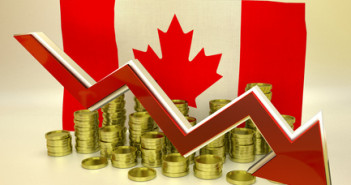The negative sentiment that permeated throughout the North American trading session yesterday has filtered through to Asian markets, with participants bidding up demand for perceived safe-havens while rotating out of higher-yield investments. The blood-bath for commodity-linked currencies has yet to reach a conclusion, with the aussie and loonie both taking an additional leg lower against the big dollar despite front month WTI stabilizing for the time being. The culprit of the continued pessimistic sentiment were the trade balance figures released from China overnight, where the trade surplus for November coming in narrower than expected, with exports sliding by more than anticipated. Both imports and exports fell on a year-over-year basis, but the total value of imports shrunk by less than what had been registered in October coming in with a  print of -8.7%. With export volumes continuing to struggle and warning of sluggish global demand, it increases the likelihood of policy response from the People’s Bank of China, especially if inflation remains well contained as referenced by the CPI numbers due out tomorrow. November’s smaller than expected trade surplus have kept pressure on commodity producing regions, with the loonie hitting new multi-year lows, while the Shanghai Comp shed close to 2% of its value.
Continuing on with developments in Asia, Japanese economic growth for the third quarter was revised out of contractionary territory, helping Japan skirt the technical definition of recession as a bump in capital expenditures helped GDP growth expand by 1.0% on an annualized basis. A rise in inventories tempered some of the enthusiasm over the upward revision to the GDP statistics, but it does help support policymakers view in the region that the economic climate is slowly progressing towards policy targets. Despite the Japanese economy moving at a standstill pace when factoring in the 0.5% contraction in the second quarter, we continue to believe policymakers focus will lean towards adjustments fiscally as opposed to further monetary policy actions, as demographic shifts within the economy keep a lid on the outlook for potential growth. The Nikkei finished its session down 1% on the day, while the yen found some buying interest which helped it strengthen marginally against the American buck.
As we get set for the North American session, the economic docket is largely controlled by Canadian data, with housing starts and building permits to drop shortly, followed by Bank of Canada Governor Poloz speaking in Toronto later in the session. While the housing data may inspire a knee-jerk reaction for loonie traders, we expect the bigger influence on the direction of USDCAD for the session will come from Poloz’s remarks and questions fielded at the press conference. The drop in oil and the knock-on effects for western Canada are currently at the forefront of market participants’ minds, so it will be interesting to see if Poloz sheds any light on the future direction of monetary policy if oil continues its descent lower. Despite the overall softness in the USD since the unwinding of weaker long positions from last week, oil has remained a thorn in the loonie’s side, with the technical position in the short-term deteriorating rather rapidly. While USDCAD is edging into overbought territory and warning a pull-back is warranted, the breakout of the ascending wedge pattern will be supported from a fundamental perspective if oil remains heavy, and there could be further losses for the loonie in the short-term.
Further reading:
Elliott Wave Analysis on German DAX and USDJPY
On Expectations and Disappointments in EUR, USD and Oil – MM #79



